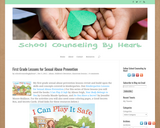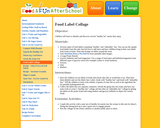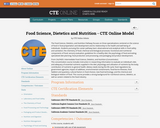
This resource provides lessons to teach students how to recognize and report abuse.
- Subject:
- Health
- Healthful Living
- Material Type:
- Reading
- Provider:
- School Counseling by Heart
- Date Added:
- 10/30/2017

This resource provides lessons to teach students how to recognize and report abuse.

This lesson assesses how much the students know concerning first-aid and then continues on, giving them real life examples to figure out what to do in emergency situations. They will present their findings to the class. The lesson concludes with a post-test to see how much they learned.

Activities to help students understand the importance of fitness and how they can take simple steps toward becoming more physically fit.

This resource helps students understand the importance of being active for at least 60 minutes each day.

Students learn five steps to help fight stress including staying positive and how to find help.

The main focus of this article is to help girls understand changes in their body during puberty.

Students learn the following five steps to prevent injuries so you can stay in the game: 1.Wear protective gear, such as helmets, protective pads, and other gear. 2.Warm up and cool down. 3.Know the rules of the game. 4.Watch out for others. 5.Don't play when you're injured.

In this lesson students learn about the importance of folic acid in birth defects prevention. Students apply the information they gain through this lesson to design a public awareness campaign. They then present their designs to the class.

This article discusses how new television shows like "Dancing with the Stars" has sparked new interest in dancing. Dancing is a great exercise for fitness.

In this lesson students will recognize a variety of healthy dinner foods.

This article provides information to help students understand MyPlate.

In this lesson students will be able to graph their estimations of caloric intake and caloric expenditures.

Children will learn to identify and discover several "healthy fat" snacks they enjoy

In this lesson, students learn about the Food Guide Pyramid and Dietary Guidelines by looking at samples of serving sizes and filling out worksheets.

Students will will explain the importance of food safety, list methods to prevent foodborne illness, and identify high risk populations for foodborne illness

This is a supplemental presentation that should be used with the Food Safety lesson.

The Food Science, Dietetics, and Nutrition Pathway focuses on three specializations centered on the science of food in food prepartation and development and its relationship to the health and well-being of individuals. Students pursuing this career pathway learn observational and analytical skills in food safety and sanitation; the chemistry of food; chemical and biological processes; functional and nutritional components of food; sensory evaluation; guidelines for a healthy diet; the psychology of food and eating; specialized diet planning; food production and processing; and packaging and product development.

Students will look at factors that can determine the well-being of a country and identify potential impacts of inequitable resource distribution.

Students will study and debate the influence of society on individual choices of food choices and physical activity levels based on access and societal barriers.

In this lesson students will identify the five food groupings and a variety of healthy snack foods.